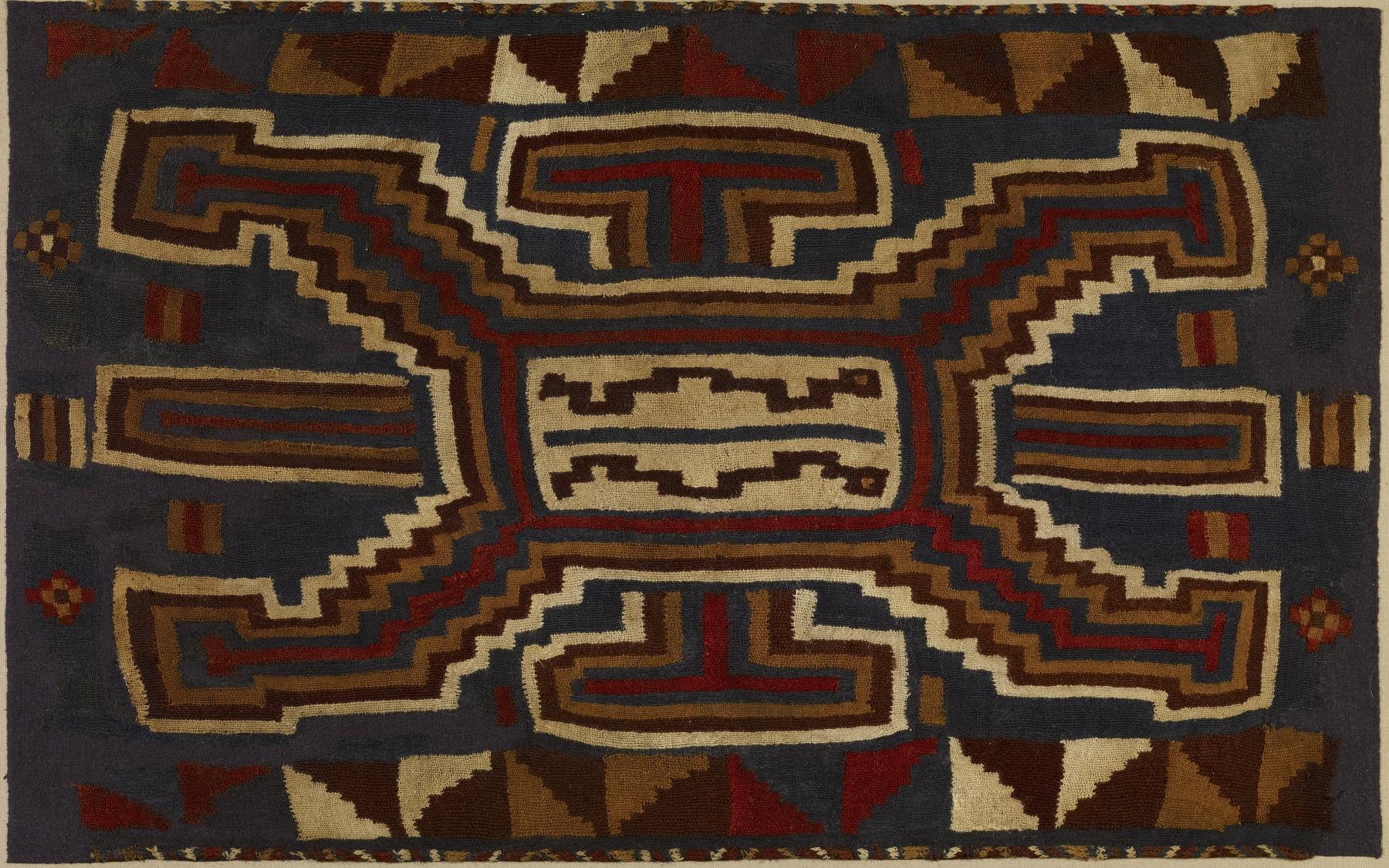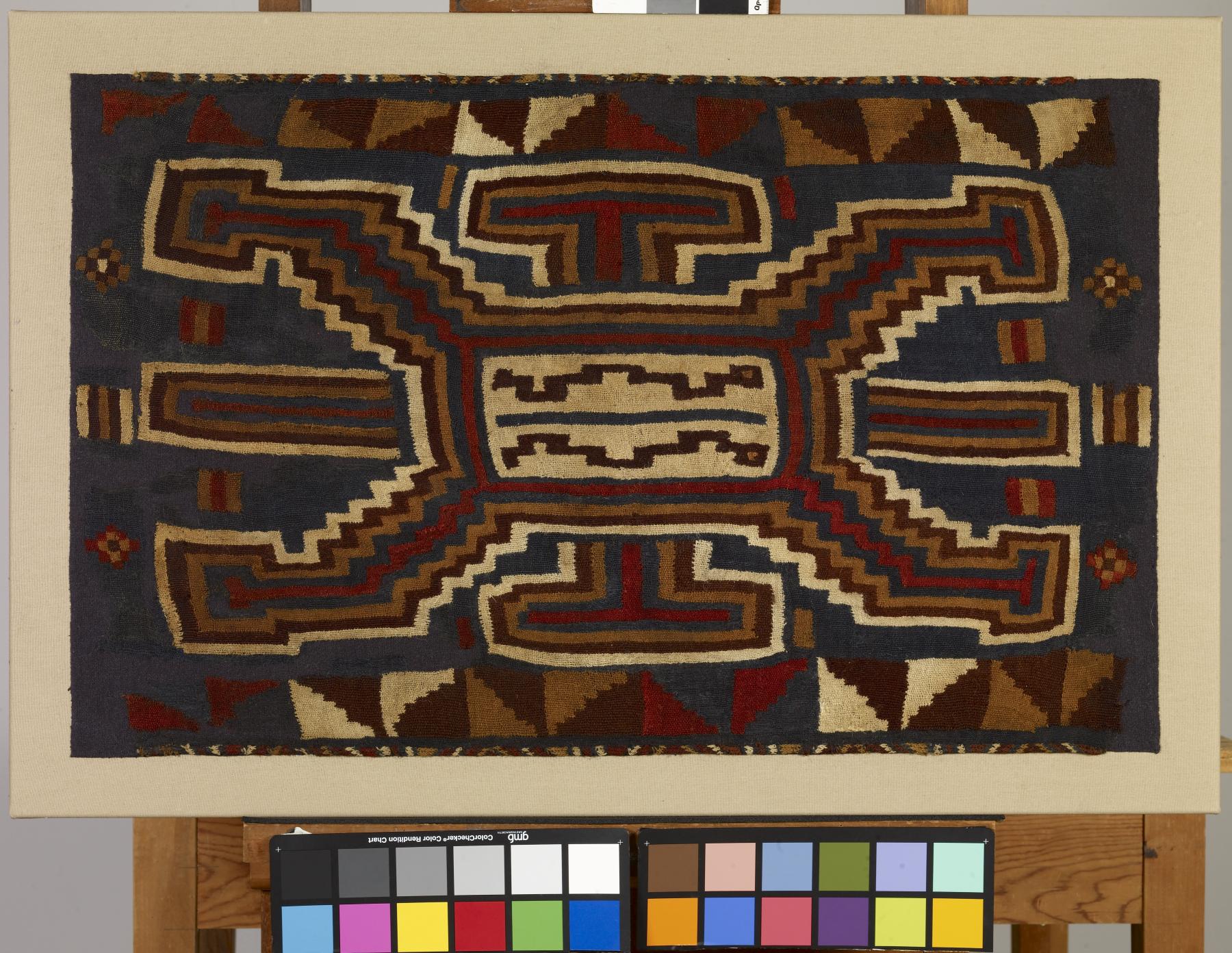Panel
(Ancient Americas )
This abstract Sihuas textile panel shows yet again the simplification and geometricization of these textiles, particularly in the later parts of the civilization’s chronology. This panel shows an abstracted deity with rays emanating from it. It would have been oriented vertically, with the small squares in the central white square standing in as eyes, with abstracted tears flowing from them. Although the precise meaning of these weeping eyes is not well-understood, it was common in the iconography of later Nazca and other cultures. Variants of this rayed deity are some of the most characteristic iconography of the Sihuas culture, with their degree of detail and realism varying significantly. The four-part crosses at the top and bottom of the panel (when oriented vertically, as it should be) also presage the Andean cross so important for Huari textiles. It is interesting that the deity is shown with eight days, perhaps referencing spiders, whose skill at spinning and weaving made them of great importance in Andean folklore.
Provenance
Provenance (from the French provenir, 'to come from/forth') is the chronology of the ownership, custody, or location of a historical object. Learn more about provenance at the Walters.
Purchased by Georgia de Havenon, New York; given to Walters Art Museum, 2016.
Geographies
Peru, Arequipa region, Sihuas (Place of Origin)
Measurements
Overall: 21 1/2 × 34 1/2 in. (54.6 × 87.6 cm)
Framed: H: 38 11/16 × W: 25 9/16 × D: 1 5/16 in. (98.2 × 65 × 3.4 cm)
Credit Line
Gift of Georgia and Michael de Havenon, 2016
Location in Museum
Not on view
Accession Number
In libraries, galleries, museums, and archives, an accession number is a unique identifier assigned to each object in the collection.
In libraries, galleries, museums, and archives, an accession number is a unique identifier assigned to each object in the collection.
2011.20.9




